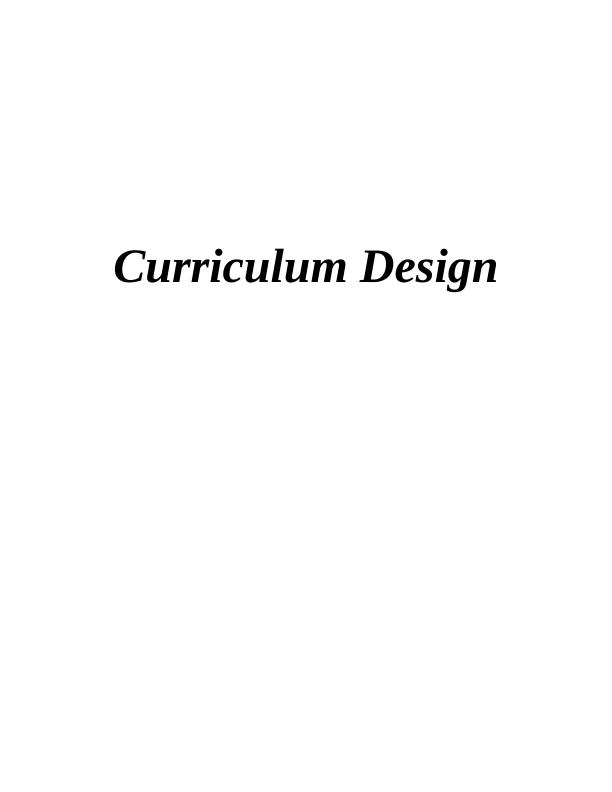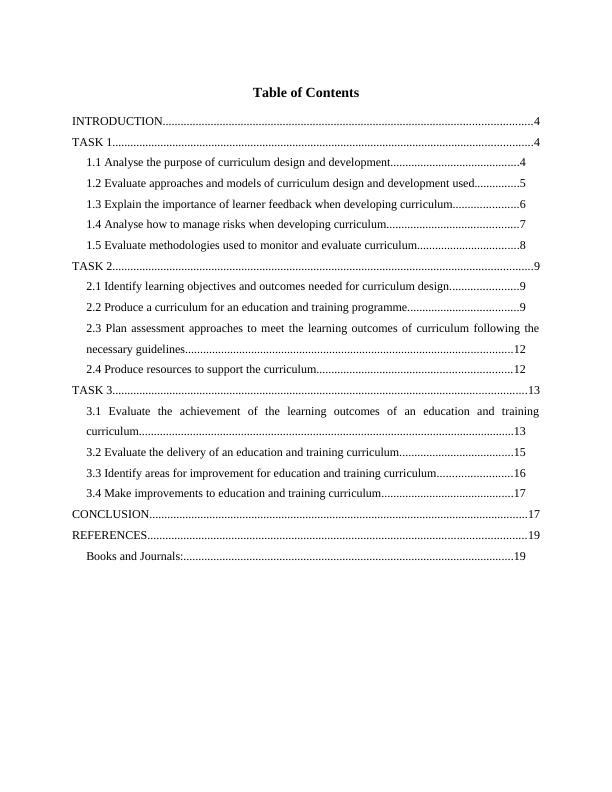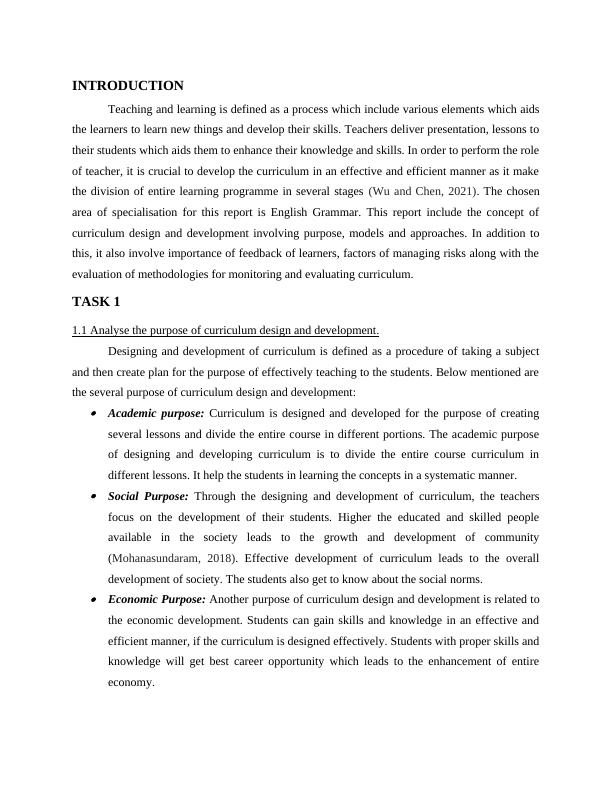Curriculum Design: Purpose, Approaches, Feedback, Risk Management and Evaluation Methodologies
20 Pages5824 Words126 Views
Added on 2023-06-08
About This Document
This report discusses the purpose, approaches, feedback, risk management, and evaluation methodologies of curriculum design. It includes identifying learning objectives and outcomes, producing a curriculum for an education and training programme, and evaluating the achievement of learning outcomes.
Curriculum Design: Purpose, Approaches, Feedback, Risk Management and Evaluation Methodologies
Added on 2023-06-08
ShareRelated Documents
End of preview
Want to access all the pages? Upload your documents or become a member.
Level 6 Diploma in Teaching and Learning: Curriculum Design and Development
|12
|3855
|322
Curriculum Design: Approaches, Purpose, Feedback, Risk Management, and Evaluation Methodologies
|23
|6382
|342
Curriculum Design: Approaches, Models, and Importance of Learner Feedback
|17
|5113
|419
Curriculum Design: Approaches, Models, and Importance of Learner Feedback
|21
|6015
|289
Curriculum Design
|20
|6546
|75
Curriculum Design
|15
|4629
|109




